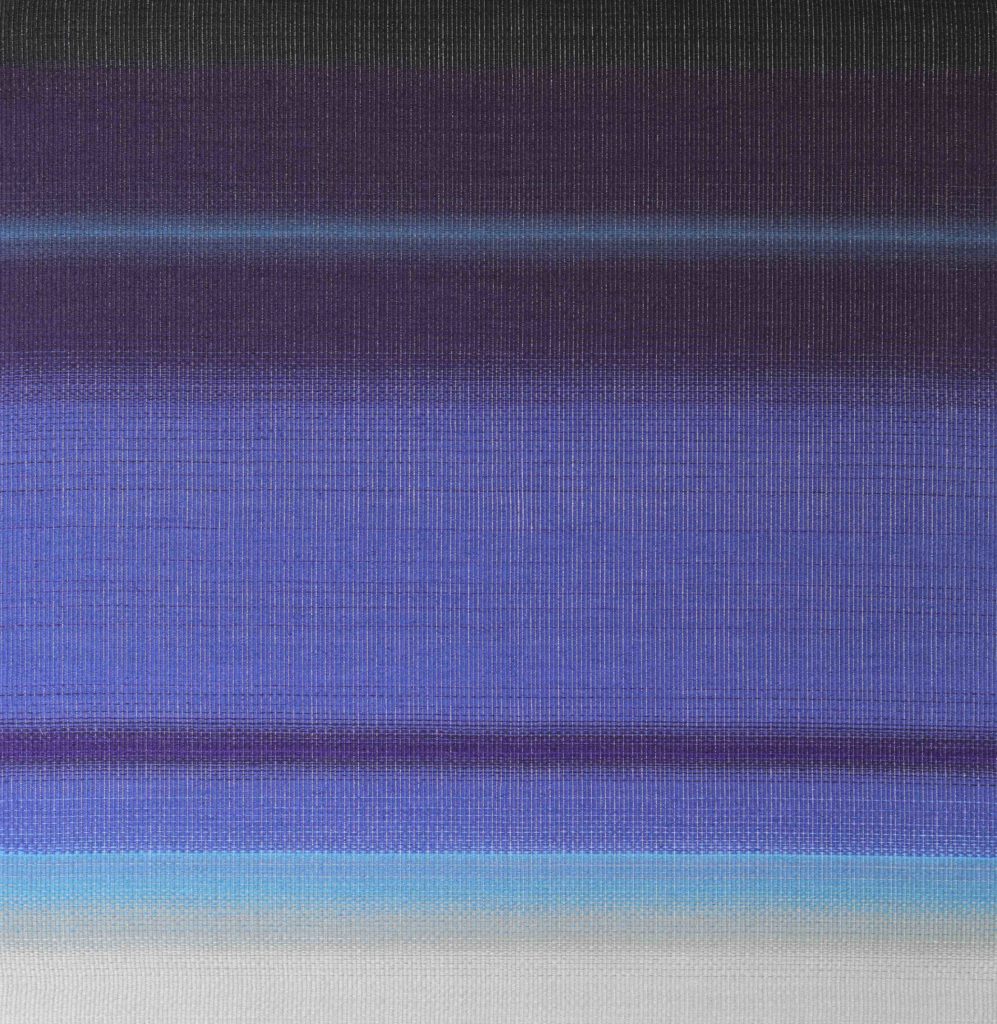
Claire Campbell Park majored in weaving at Scripps College, and has been working in the medium since the 1970s. Here, she discusses her recent exhibition at Goya Contemporary Gallery and how she was influenced by Rothko and Alber’s color theories.
“I use a four-harness loom, which is what I first learned to operate when I started weaving in the early ’70s. My parents bought it for me after my first year of weaving at Scripps College. I’ve been using it ever since. I feel fortunate that I found something that I love and have stuck with it. I’ve done other series—mixed media series, sculptural series—but they’ve all been related to fiber and textiles. Right now, I’m doing the simplest of all weaves: plain weave. I like it for its order. It doesn’t get in the way of the main intent of the work, of what I’m trying to say.
I love abstraction and the interaction of color and light. The intent of my work is always to make tangible a sense of reverence, peace, hope, and faith. Those are the things I’m trying to hold onto and give to other people. I want to do it in a way that is dignified without dismissing the severity of our realities and our struggles. We all go through a lot. I’m trying to find that spiritual core that unites us. It’s something I hope all people can respond to.
I taught color theory for more than 35 years. It was wonderful to show with Josef Albers at Goya Contemporary. Recently, I was giving a talk about him at the Heard Museum in Phoenix, and after all these years, I realized how much his way of thinking and teaching influenced my own use of color. Another big influence is the Rothko Chapel. It helped me to understand what could be said with abstraction and color. Seeing the chapel was an intense experience for me. When I left the room and went out into the lobby, I saw how people from all different backgrounds had written in the visitor book about the intense revelatory experience of seeing his work in that space.
I change my colors around all the time. I’m inspired by different things, like nature. But it goes beyond that—it’s that sense of eternity, that beginning and end at the same time. Book of Hours: The End and the Beginning looks beyond the beauty that I see to that feeling of transcendence. I get excited when people who own my work use it in that way. I hope it supports others in living their best intentions. For example, a psychiatrist has one of my works in her office, which she looks at between clients to clear her mind, and a concert pianist told me that he keeps one by his piano because it helps him to compose.”

